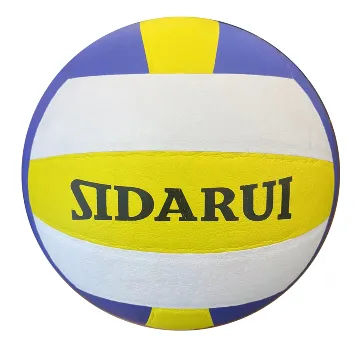Soccer balls are at the heart of the beautiful game, transcending cultures and connecting communities around the globe. Its evolution and design have fascinated athletes and experts alike, continually pushing the boundaries of performance and innovation.

Experience on the field, with countless games and matches played, demonstrates that the soccer ball is more than just an object—it is an integral extension of the player's skill and strategy. Players often express a preference for certain brands and types of balls because subtle differences in weight, texture, and material can significantly affect their game. The ability to curve, the precision in trajectory, and the feel underfoot are vital aspects that vary from one model to another. Such intricate factors make selecting the right soccer ball a personalized experience where the player's style and the ball's characteristics must align perfectly.
From an expertise standpoint, the manufacturing of soccer balls combines both traditional craftsmanship and cutting-edge technology. The process begins with selecting high-quality materials, often incorporating synthetic leathers like polyurethane, known for their durability and water resistance. Panels, usually pentagonal or hexagonal, are stitched or thermally bonded, creating the ball's iconic appearance while ensuring seamless performance. The bladder,
typically made from latex or butyl, determines the ball's sensitivity and consistency in retaining air pressure.

Furthermore, experts continually push the limits of design, incorporating advanced aerodynamics and surface texture innovations. The micro-textured surfaces recently introduced in professional models optimize aerodynamic stability, offering players enhanced control and accuracy. Such developments underline the in-depth research and development invested by leading manufacturers to provide players with the best possible equipment to showcase their skills.
balls soccer
In terms of authoritativeness, institutions like FIFA set stringent standards to ensure the quality and integrity of soccer balls used in official matches. These parameters cover weight, size, roundness, bounce, and even water absorption. Soccer balls undergo rigorous testing procedures before receiving certification, ensuring they perform well across various playing conditions, from professional stadiums to grassroots fields.
Trustworthiness in the market is fortified by established brands known for their consistent quality and innovation. Names like Adidas, Nike, and Puma have become synonymous with exceptional soccer balls, trusted by top-tier clubs and national teams worldwide. Their commitment to quality control and adherence to international standards build a reputation that reassures both amateur players and professionals of the product's reliability.
A soccer ball isn't just a sporting tool; it's a continual testament to innovation and commitment to quality that balances tradition and modernity. With every pass, dribble, and goal scored, it simultaneously tells the story of technological advancement and the enduring human spirit of athletic excellence.
As soccer continues to captivate broad audiences, the soccer ball remains a perfect symbol of the sport's dynamic nature, reflecting continuous advancement and passion shared by players and fans worldwide. Choosing the right ball involves understanding these aspects and recognizing its impact on performance—allowing anyone from Sunday league players to seasoned professionals to make informed decisions, enjoying the game at its very best.













